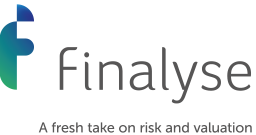How Finalyse can help
Helping you comply with the Solvency II regulations as well as optimising your Solvency II balance sheet
Combining a technological and practical approach to deliver actuarial and risk modelling solutions
Agile and comprehensive assessment, measurement and management of your market and liquidity risks
EIOPA's Guidance on Foreseeable Dividend Deductions: What Insurers Need to Know and How to Respond

Francis is a Principal Consultant in charge of our insurance practice in Dublin. He has 15 years of experience within the life and non-life (re)insurance industry. His expertise covers the areas of financial reporting, prudential regulation, and actuarial modelling. Francis has worked in both industry and consulting with extensive exposure to Solvency II and BMA-regulated clients and a keen eye on new regulatory developments.
Introduction
Many insurers are wrapping up their year-end regulatory returns - and with that comes the opportunity to reassess how foreseeable dividends are being handled under Solvency II.
EIOPA’s February 2025 Supervisory Statement1 sheds light on supervisory expectations and provides much-needed clarity around dividend deduction practices. In this blog, we break down the three approaches commonly used in the market, outline when each is appropriate, and explore how these choices impact solvency metrics. We also explain how Finalyse can help insurers align with regulatory guidance efficiently and with confidence.
In February 2025, the European Insurance and Occupational Pensions Authority (EIOPA) published a Supervisory Statement on the deduction of foreseeable dividends from own funds under Solvency II. This statement, based on Commission Delegated Regulation (EU) 2015/35 and the updated Implementing Regulation (EU) 2023/894, aims to clarify and harmonise supervisory expectations across EU member states regarding how insurers should treat foreseeable dividends in their Solvency II own funds calculations.
Notably, EIOPA is currently reviewing Commission Implementing Regulation (EU) 2023/894 as part of the broader Solvency II review. This review may result in future changes to reporting standards and supervisory expectations. In the meantime, the Supervisory Statement offers initial guidance to promote consistent interpretation and enhance convergent supervision across EU member states.
In addition, as of 31 December 2023, the instructions for template S.23.01 (Own Funds) under Commission Implementing Regulation (EU) 2023/894 require undertakings and groups to deduct in full the annual foreseeable dividend when reporting to supervisory authorities. This formalises expectations around dividend treatment and elevates its importance in regulatory submissions.
Why It Matters
For insurance and reinsurance undertakings, the treatment of foreseeable dividends is not just a technical accounting issue. It has direct implications on reported Solvency II ratios, potentially influencing capital planning, shareholder communication, and even dividend strategy. Misalignment with regulatory expectations may invite supervisory scrutiny or reputational risk.
Under Solvency II, “foreseeable dividends” refer not only to declared dividends, but also to any expected distributions or charges that are reasonably anticipated—even if not yet formally approved. This includes interim dividends and other payouts that reduce the availability and permanence of own funds.
The Three Approaches to Dividend Deduction
EIOPA has identified three main approaches currently in use by insurance firms for deducting foreseeable dividends from own funds:
1. Annual Full Deduction
Under this method, firms deduct:
- Dividends from the previous financial year (T-1), even if not yet formally approved by the Board, and
- An estimate of dividends based on the full current year (T) earnings.
Pros:
- Conservative and prudent.
Cons:
- May result in “double deduction” from both years T-1 and T.
- Profit estimates for the current year may be unreliable, especially early in the year.
- Can distort own funds and Solvency II ratios.
2. Quarterly Accrued Deduction
This method involves:
- Deducting dividends from realised earnings of the previous year, and
- A pro-rata deduction of dividends based on actual profits recorded in the current quarter.
Pros:
- Better alignment of profits and dividends.
- Reduces own funds volatility.
- Offers a more accurate and economically sound view.
Cons:
- Requires quarterly updates and estimation discipline.
- Interim results may still change, requiring later adjustments.
3. Deduction After Board Approval
Here, dividends are deducted only once they have been formally declared or approved by the Board.
Pros:
- Avoids premature deduction of uncertain obligations.
Cons:
- May understate liabilities if dividends are foreseeable but not yet approved.
- Less consistent with the principle of economic substance under Solvency II.

EIOPA's Supervisory View
EIOPA is not mandating one specific method, but its preferences are clear:
- Quarterly accrued deduction: generally, fully acceptable approach and Supervisors are not expected to take action against firms using this approach.
- Annual full deduction: Acceptable in stable, predictable environments—e.g. when fixed dividends are paid from retained earnings.
- Post-approval deduction: Only considered appropriate where firms face genuine difficulty in estimating foreseeable dividends.
This guidance is designed to promote consistency and proportionality while improving the comparability of solvency disclosures across jurisdictions.
Practical Implications for Insurers
Insurers should take proactive steps in light of this guidance:
- Review your current dividend deduction approach: Does it align with EIOPA’s expectations?
- Evaluate your internal forecasting capabilities: Can you reliably estimate quarterly earnings?
- Update your documentation and internal controls: Clearly define and support your dividend treatment in your Solvency II reporting.
- Engage with your supervisory authority: Ensure transparency and pre-empt potential challenges or misunderstandings.
How Finalyse Can Help
At Finalyse, we support insurers interpret and implement regulatory guidance effectively. Our multidisciplinary team combines actuarial, financial, and risk expertise to help you:
- Assess the impact of various dividend deduction strategies on your Solvency II ratios.
- Implement robust processes for quarterly earnings estimation and pro-rata dividend treatment.
- Enhance your reporting and disclosures to meet supervisory expectations.
Whether you’re transitioning to a new approach or simply validating your existing framework, Finalyse helps ensure your practices are aligned, efficient, and regulator ready.
Reference
Finalyse InsuranceFinalyse offers specialized consulting for insurance and pension sectors, focusing on risk management, actuarial modeling, and regulatory compliance. Their services include Solvency II support, IFRS 17 implementation, and climate risk assessments, ensuring robust frameworks and regulatory alignment for institutions. |

Our Insurance Services
Check out Finalyse Insurance services list that could help your business.
Our Insurance Leaders
Get to know the people behind our services, feel free to ask them any questions.
Client Cases
Read Finalyse client cases regarding our insurance service offer.
Insurance blog articles
Read Finalyse blog articles regarding our insurance service offer.
Trending Services
BMA Regulations
Designed to meet regulatory and strategic requirements of the Actuarial and Risk department
Solvency II
Designed to meet regulatory and strategic requirements of the Actuarial and Risk department.
Outsourced Function Services
Designed to provide cost-efficient and independent assurance to insurance and reinsurance undertakings
Finalyse BankingFinalyse leverages 35+ years of banking expertise to guide you through regulatory challenges with tailored risk solutions. |

Trending Services
AI Fairness Assessment
Designed to help your Risk Management (Validation/AI Team) department in complying with EU AI Act regulatory requirements
CRR3 Validation Toolkit
A tool for banks to validate the implementation of RWA calculations and be better prepared for CRR3 in 2025
FRTB
In 2025, FRTB will become the European norm for Pillar I market risk. Enhanced reporting requirements will also kick in at the start of the year. Are you on track?
Finalyse ValuationValuing complex products is both costly and demanding, requiring quality data, advanced models, and expert support. Finalyse Valuation Services are tailored to client needs, ensuring transparency and ongoing collaboration. Our experts analyse and reconcile counterparty prices to explain and document any differences. |

Trending Services
Independent valuation of OTC and structured products
Helping clients to reconcile price disputes
Value at Risk (VaR) Calculation Service
Save time reviewing the reports instead of producing them yourself
EMIR and SFTR Reporting Services
Helping institutions to cope with reporting-related requirements
Finalyse PublicationsDiscover Finalyse writings, written for you by our experienced consultants, read whitepapers, our RegBrief and blog articles to stay ahead of the trends in the Banking, Insurance and Managed Services world |

Blog
Finalyse’s take on risk-mitigation techniques and the regulatory requirements that they address
Regulatory Brief
A regularly updated catalogue of key financial policy changes, focusing on risk management, reporting, governance, accounting, and trading
Materials
Read Finalyse whitepapers and research materials on trending subjects
Latest Blog Articles
Contents of a Recovery Plan: What European Insurers Can Learn From the Irish Experience (Part 2 of 2)
Contents of a Recovery Plan: What European Insurers Can Learn From the Irish Experience (Part 1 of 2)
Rethinking 'Risk-Free': Managing the Hidden Risks in Long- and Short-Term Insurance Liabilities
About FinalyseOur aim is to support our clients incorporating changes and innovations in valuation, risk and compliance. We share the ambition to contribute to a sustainable and resilient financial system. Facing these extraordinary challenges is what drives us every day. |

Finalyse CareersUnlock your potential with Finalyse: as risk management pioneers with over 35 years of experience, we provide advisory services and empower clients in making informed decisions. Our mission is to support them in adapting to changes and innovations, contributing to a sustainable and resilient financial system. |

Our Team
Get to know our diverse and multicultural teams, committed to bring new ideas
Why Finalyse
We combine growing fintech expertise, ownership, and a passion for tailored solutions to make a real impact
Career Path
Discover our three business lines and the expert teams delivering smart, reliable support


